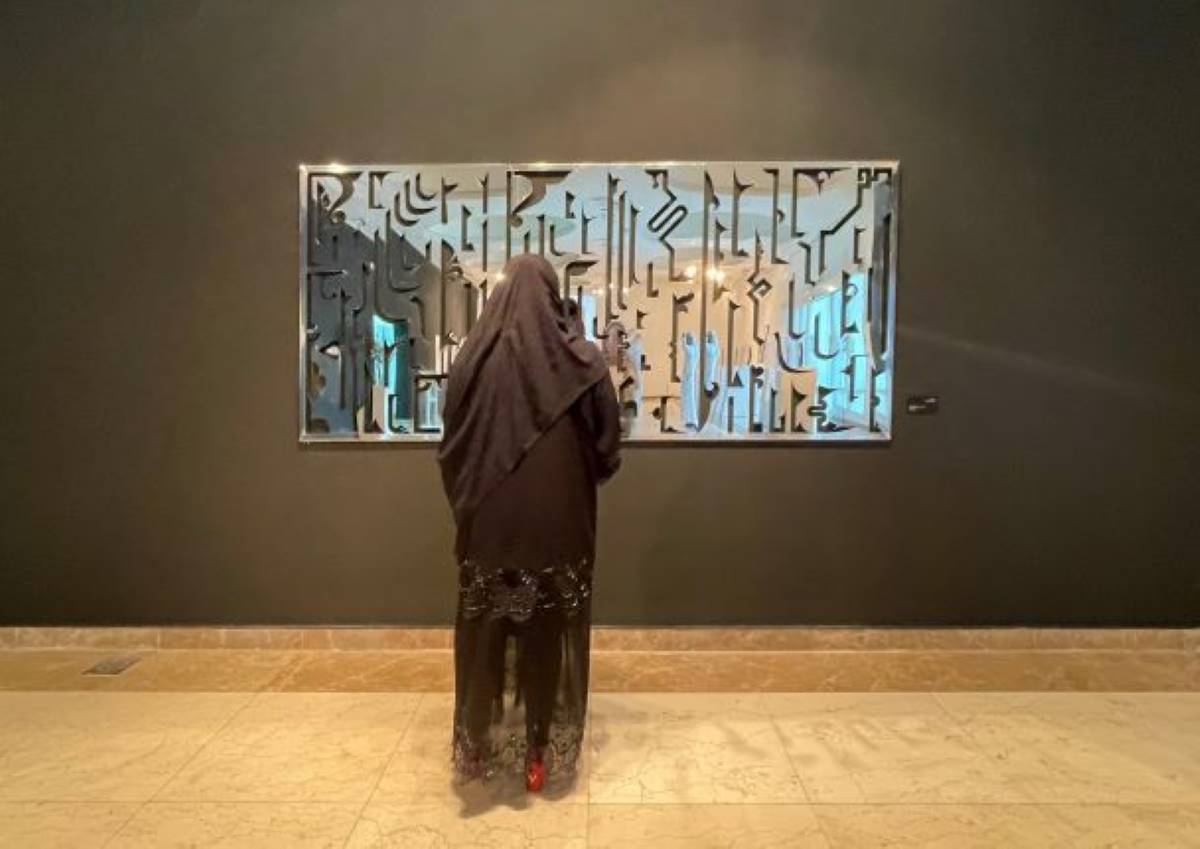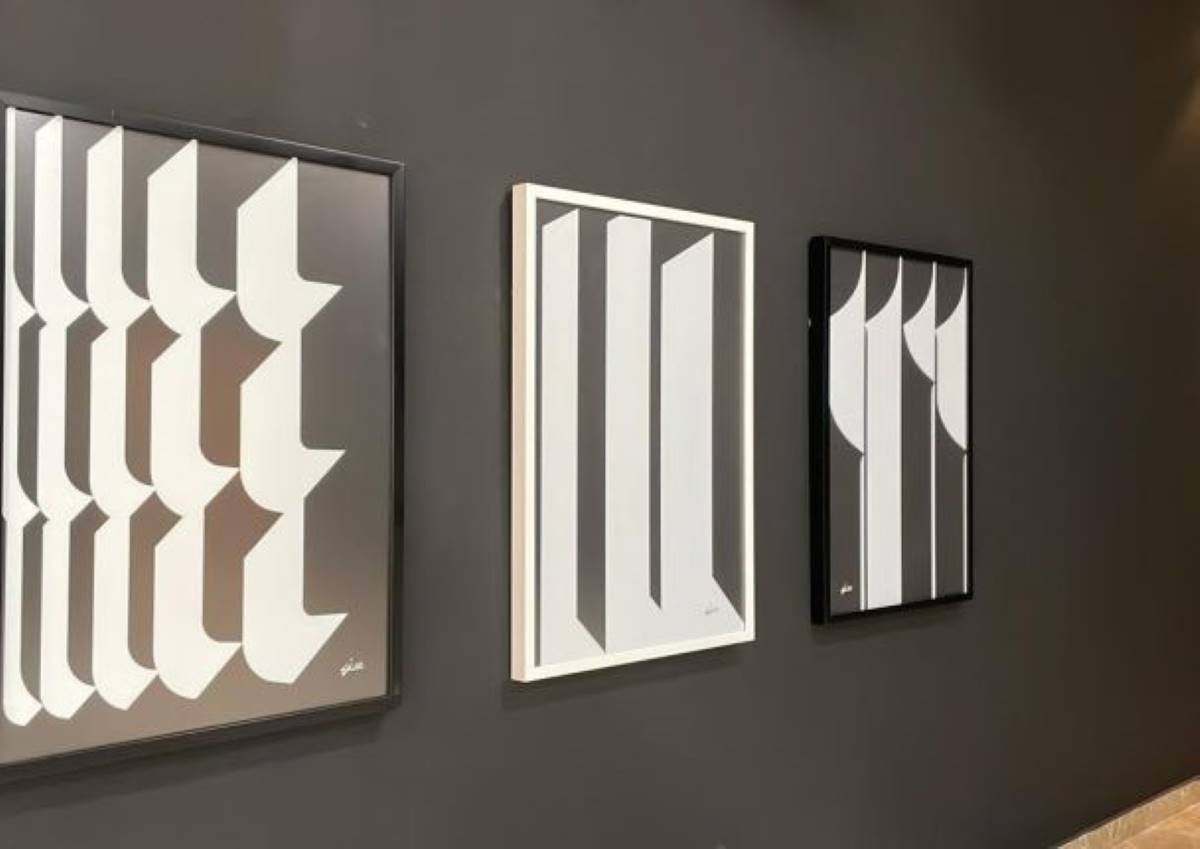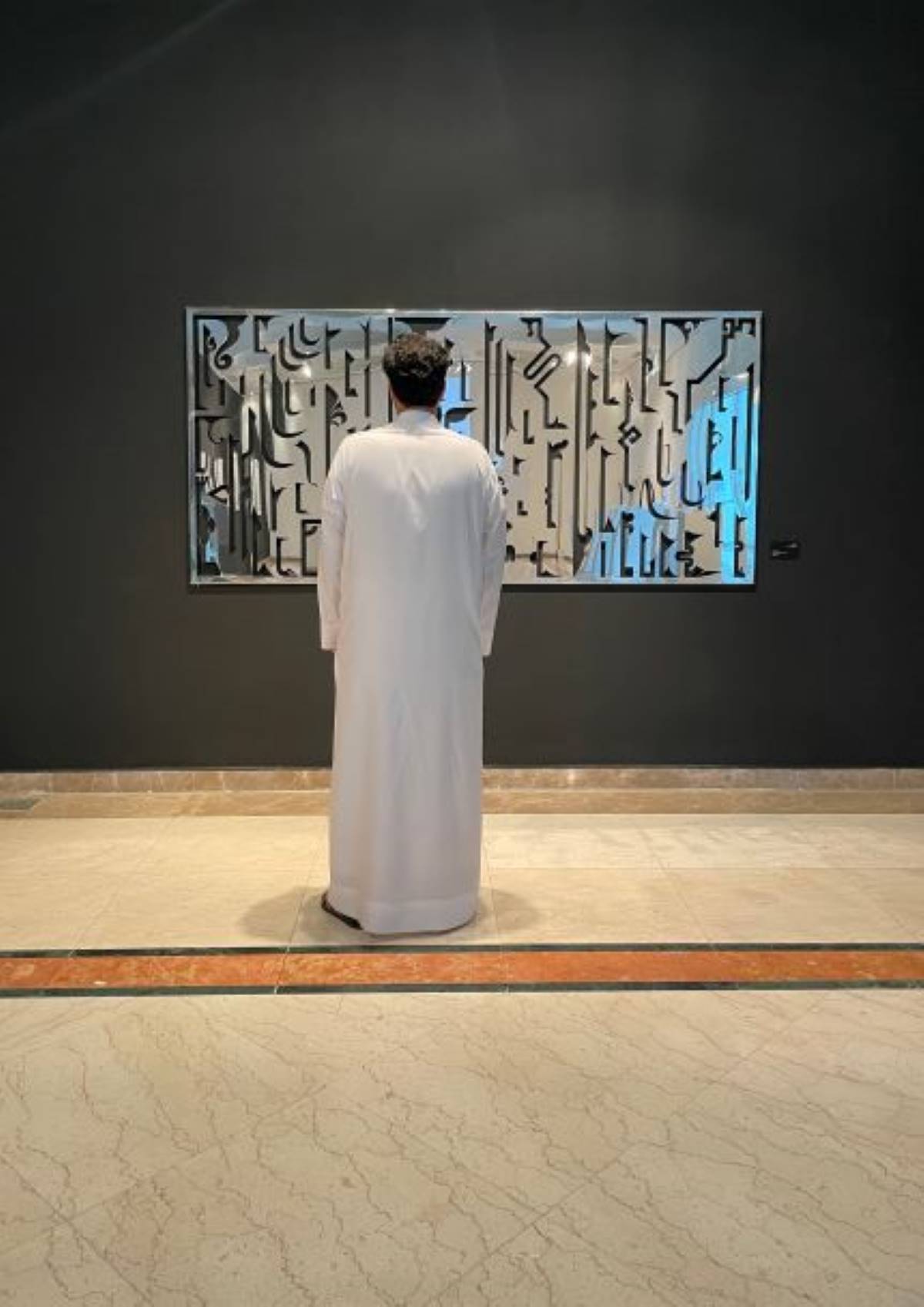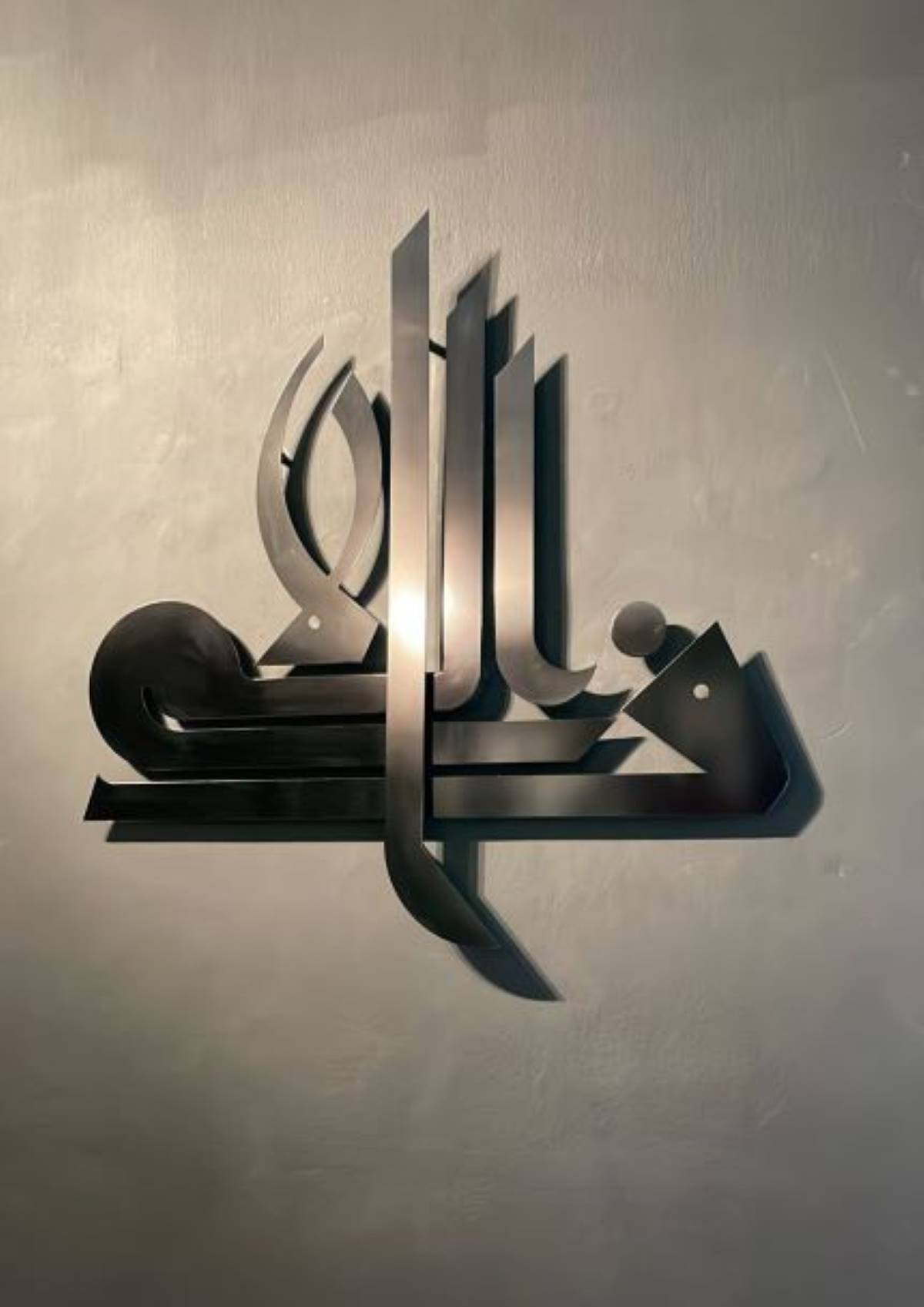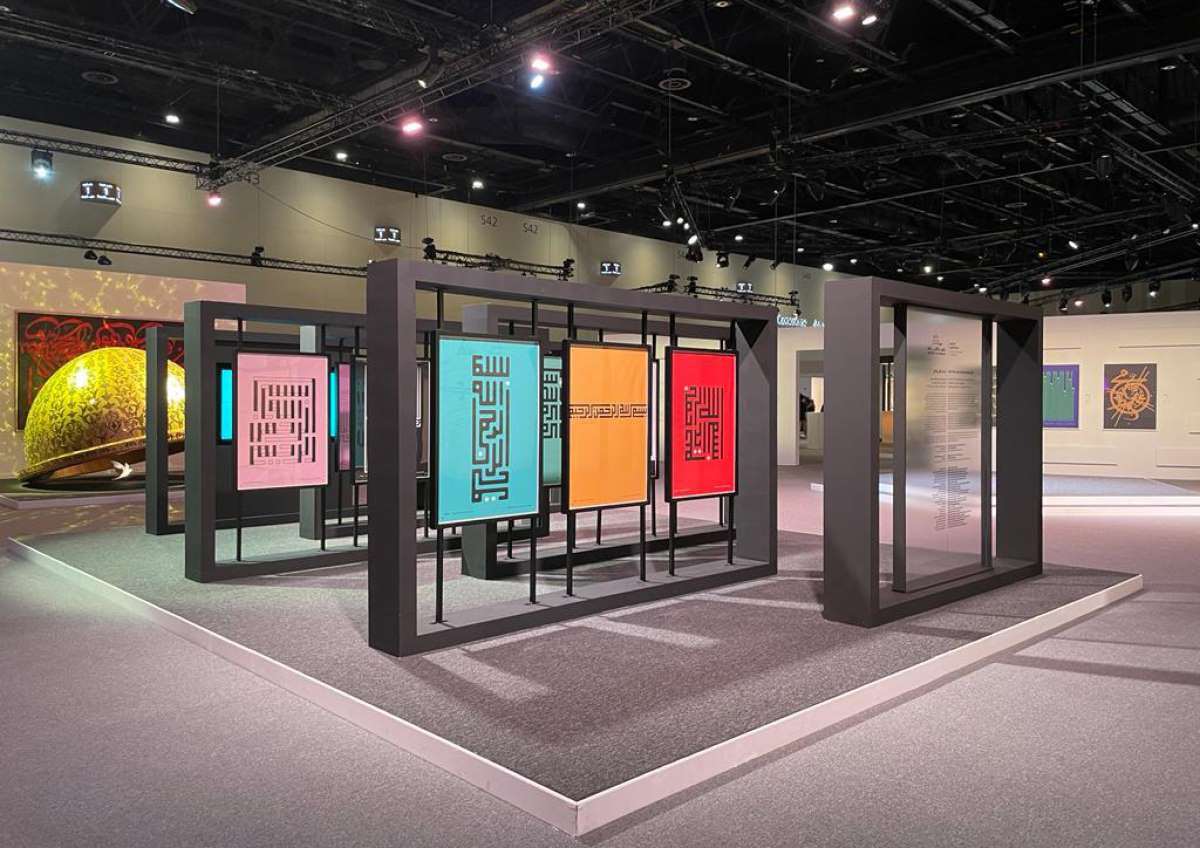Holy Letter of Arabic Alphabet
The Arabic Letter Framing Different Concepts
On the surface, it is the first Holy Letter of Arabic Alphabet, with a numerical value equaling number 1. But the letter frames different concepts. It signifies God, the only one, the first, the beginning, and the last. It is the letter Alif of the Arabic Alphabet that has captivated artist Nada Abdallah. To this letter she has devoted her energy, time, skill, and knowledge of Arabic calligraphy. Nada Abdallah does not hide her devotion to this letter. “Alif is the beginning, the first letter of the Arabic alphabet and the first letter of the name Allah,” she says.
Back to Alif was the title of Abdallah’s solo exhibition held at Rawaq gallery in the College of Fine Arts and Design, University of Sharjah, as part of celebrations to mark Sharjah Calligraphy Biennial she chose the letter to show the beauty of Arabic calligraphy, demonstrate its history, styles, and forms. Her calligraphic works of Alif come in different shapes, and can be seen on posters, sculpture, murals, and animation. “Transformation in the Arabic script styles could be observed in the Alif of each script,” she says. “With different measures and the vertical elevation of the letter, the signature of the style can be detected.” “The Alif acts as the symbol of the script through which the experts can discern the style and type of script.” Nada Abdallah’s artwork focuses on discovering the Kufic Alif and demonstrating the possibility of spawning new styles using the latest media, digital design, and technology. “Each line Alif starts with a sequence of dots and moves upward or descends downwards to form a vertical line of the sacred letter.” “In turn, the letter morphs into different molds based on the script used,” she adds. In the earliest manuscripts, the Primary Kufic Alif was short and bold, “reflective of the focus on the religious content rather than the visual,” she says. In her artwork, Ms. Abdallah has transformed her fascination and devotion to Alif into elegant elevated vertical strokes. She goes on: “Alif’s journey from east to west, and from past to present highlights the layers of development.” The Kufic, a calligraphic script to which Ms. Abdallah is so attached, is an Arabic script that was invented in the seventh century in Iraq’s southern city of Kufa. The script attained its peak in the ninth century illuminating Quranic manuscripts, parchments, inscriptions on tombstones, architectural decorations, bows, and coins.
The Kufic script comes in different types and characteristics, and so are the versatile styles of Ms. Abdallah’s Alif. Some of the most notable types of Kufic are Fatimid, Qairawani, and Mamluki, among others, each designating a Muslim dynasty or a geographical locality of the Muslim world. The Kufic is reputed for its decorative style and motifs with its foliated, knotted, floriated, square, and other types coupled with characteristics that can be unique, angular, rectilinear, horizontal, and playful. A traveler to an Arab or Muslim country can see Kufic script almost everywhere, but probably without paying much thought to it. The Kufic can be on logos, billboards, signages, newspapers, and magazines, but most notably as part of architectural wonders in which verses of the Muslim holy book are carved on niches and walls of mosques. Ms. Abdallah’s Kufic letterforms feature mainly traditional elements and themes which have become part of people’s lives in the Arab and Muslim world. Ms. Abdallah draws heavily on religious symbols in her calligraphic artwork. Muslims hallow Alif as sacred, hence her interest in the letter signifying the Almighty. Another outstanding calligraphic artwork of hers draws on a saying by the Muslim Prophet Muhammed. Titled Sawasiya or equality, the work previsualizes the concept behind the prophet’s saying that “people are equal like the teeth of a comb” no matter their color, religion, orientation, or race. “Within this context, the comb connotes unity and non-discrimination,” she says. Like her Alif, Ms. Abdallah Sawasiya typography is based on ancient Kufic calligraphy “to connect with the devotional aspect of the content.” “The text is represented in a dotted Kufic style developed specifically for this project,” she says. Ms. Abdallah employs several dots to attract attention and “build visual lines and solid figures worthy of a greater focus.” She produced and exhibited her Sawasiya at the height of the Covid-19 pandemic to highlight “the importance of unity, collaboration and connectivity.”
Artist, designer and educator, Ms. Abdallah is the founder and director of Bilarabic Design Festival, a gathering seeking to promote Arabic culture and design as a dynamic platform for open-ended collaboration. She has exhibited her work in Lebanon, the UAE, Greece, Korea, Iraq, Jordan, Egypt, Bahrain, Saudi Arabia, the US and a host of other countries. Her interest, work and research in Arabic calligraphy and typography go back to the 1990s. In the years she has been at the University of Sharjah’s College of Fine Arts and Design, Ms. Abdallah and her students created Arabic fonts inspired by the Arabic Calligraphy, designed Latin font’s inspired by Arabic letterforms and developed new ways on working with the square Kufic script. Her students designed Arabic Typography from fonts they created to write the UAE national anthem in the form of the UAE flag. This splendid design has been turned into a mural currently adorning the entrance of her college and was displayed at ATypI, the Paris-based Association Typographique Internationale. The association organizes conferences devoted to everything imaginable related to type design and typography.
